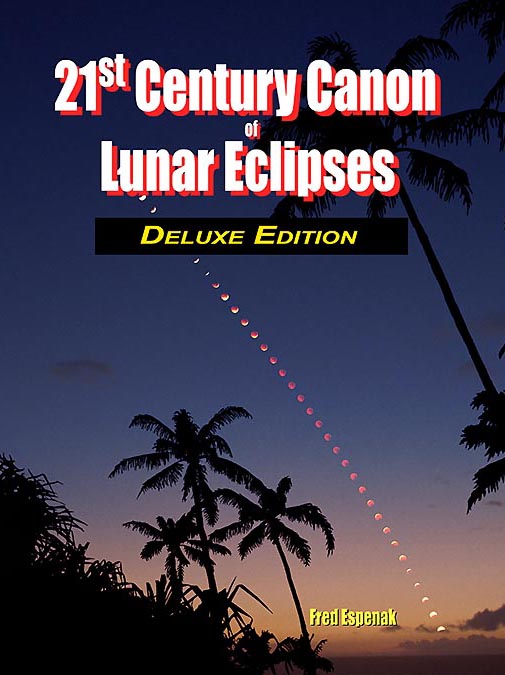Earth’s Elliptical Shadow
In 1707, Philippe de La Hire made a curious observation about Earth's umbral shadow during a lunar eclipse. The predicted radius of the shadow needed to be enlarged by about 1/41 in order to fit timings made during the lunar eclipse. The enlargement is attributed to Earth's atmosphere, which becomes increasingly less transparent at lower levels. Additional observations over the next two centuries revealed that the shadow enlargement was somewhat variable from one eclipse to the next.
William Chauvenet (1891) formulated one method to account for the shadow enlargement while André-Louis Danjon (1951) devised another. Both methods assumed a circular cross section for the umbral shadow and are widely used among almanac offices around the world. For example, Chauvenet’s method is used by the Astronomical Almanac (published jointly by the USNO and HMNAO) to calculate lunar eclipse circumstances, while Danjon’s method is used by the Connaissance des Temps (published by the Bureau des Longitudes).
However, Earth is flattened at the poles and bulges at the Equator, so an oblate spheroid more closely represents its shape. The projection of each of the planet's shadows is an ellipse rather than a circle. Furthermore, Earth's axial tilt towards or away from the Sun throughout the year means the elliptical shape of the penumbral and umbral shadows varies as well.
In an analysis of 22,539 observations made at 94 lunar eclipses from 1842 to 2011, Herald and Sinnott* (2014) found that the size and shape of the umbra are consistent with an oblate spheroid at the time of each eclipse, enlarged by the empirically determined occulting layer that uniformly surrounds Earth. The effective height of this layer was found to be 87 kilometers. Based on this work, the authors developed a new method to calculate the shadow enlargement including its elliptical shape.
This new method is the most rigorous and accurate procedure to date.
Both the Eclipse Almanac and the 21st Century Canon of Lunar Eclipses use this method in the prediction of lunar eclipses.
* Herald, D., and Sinnott, R. W., “Analysis of Lunar Crater Timings, 1842–2011,” J. Br. Astron. Assoc., 124, 5 (2014)


